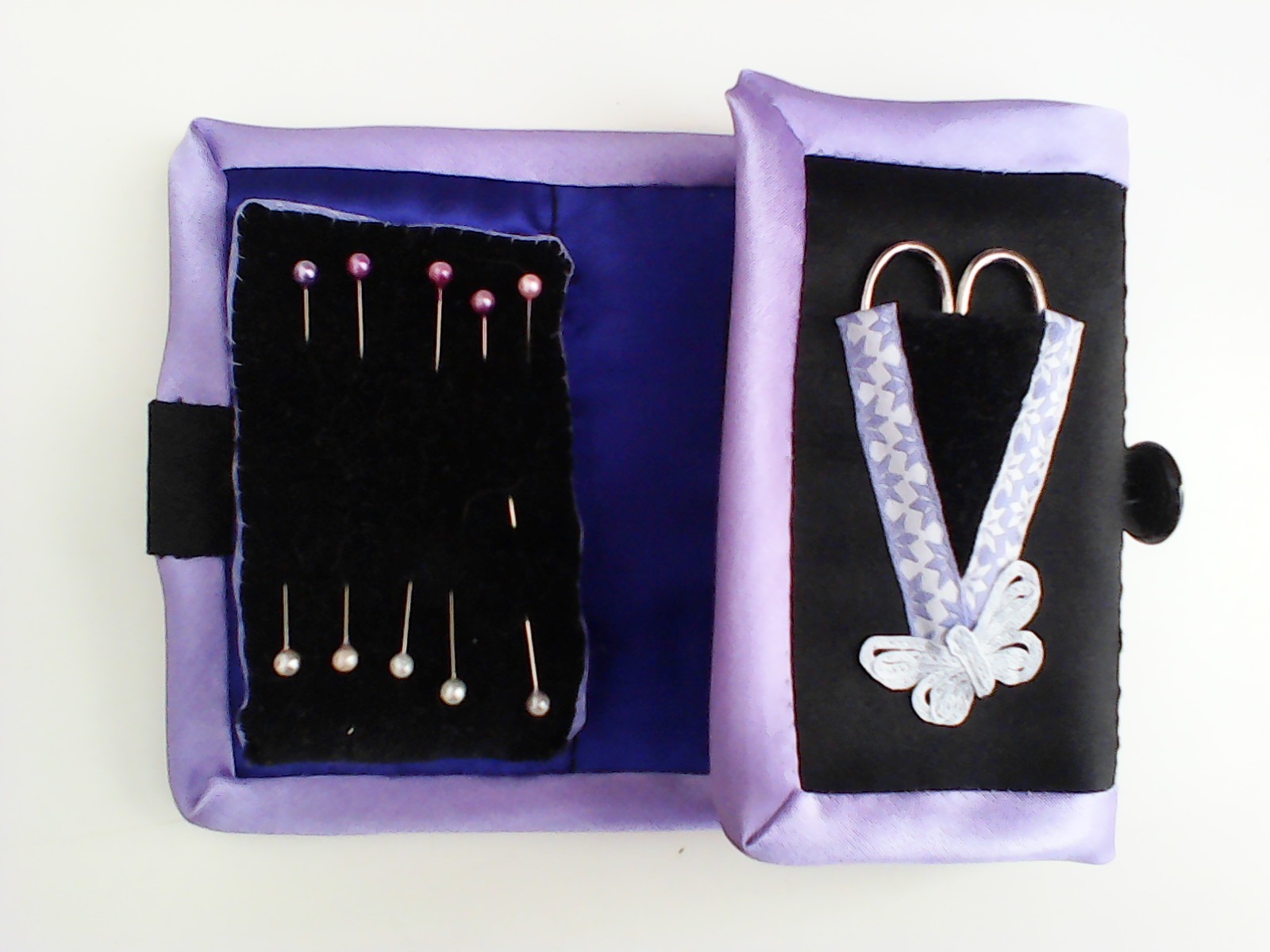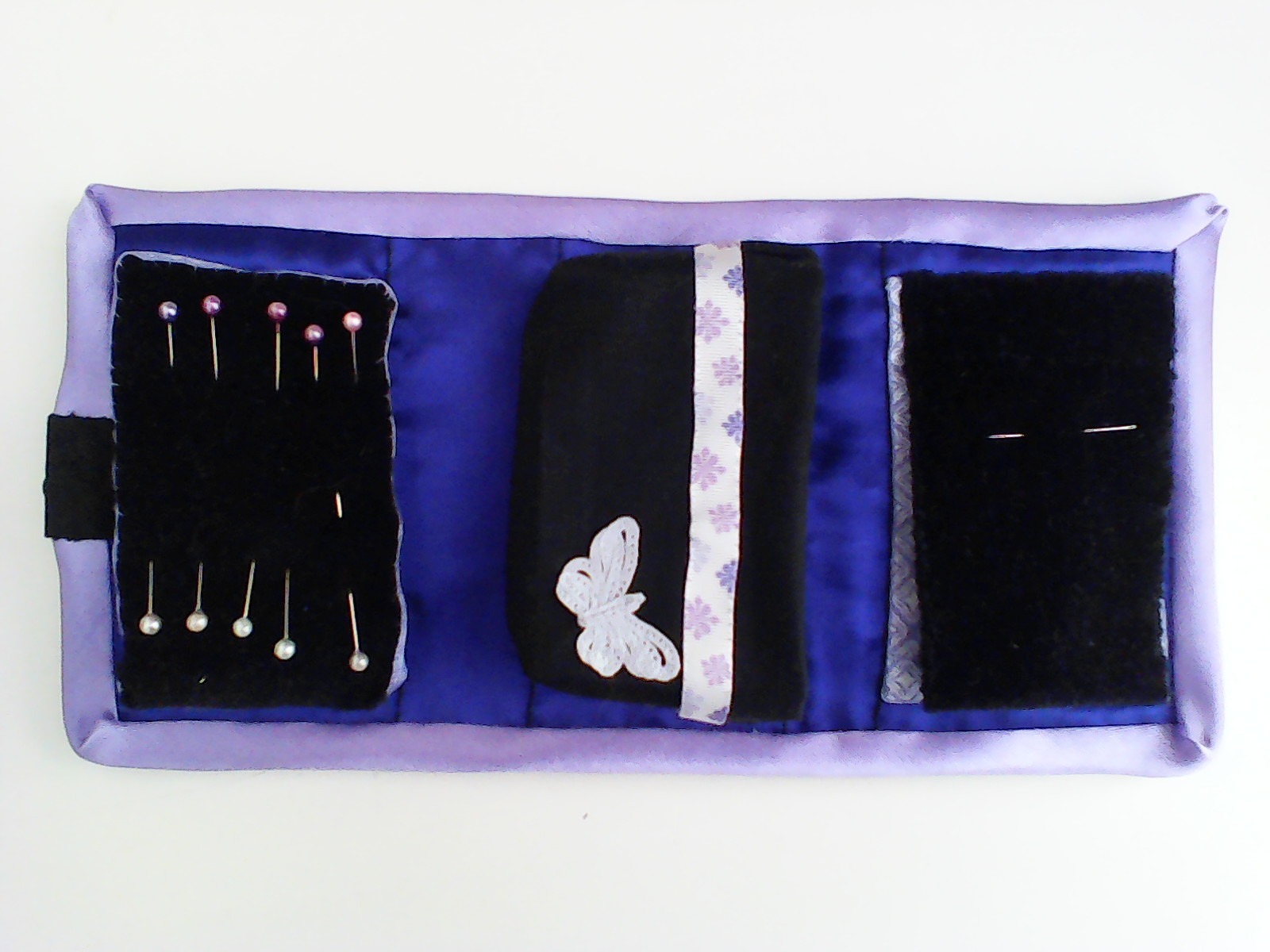It’s been 20 months since I finished the Giant Quilt of Craziness, and the memory is perhaps beginning to fade a little. I thought about it a lot this last week, though, as resuming work on the Rose Quilt (moderately giant & definitely crazy, albeit not a crazy quilt) convinced me that now was the time to make the Hussif of Perpetual Remembrance, crafted from the leftover materials of the GQC.

This hussif is not only going to save me a world of trouble (in carting about a needlecase, scissors, thimble, pin container and reels of thread), it is also going to remind me of a Very Important Lesson.
Small is Beautiful.
Small is elegant, well-designed, pleasingly executed. Small is, in fact, Sanity.
Even the process of making the hussif has been a revelation. The careful planning and exquisite care of a small thing well done is infinitely more satisfying than the ambitious blaze of a Big Thing Begun followed by years of procrastination, dutiful slogging and regret.
Not that small things are guaranteed to go well, of course, and something going less than well in an enormous ‘just get it done’ project is probably less distressing than something going badly in a project which was, until then, Just Dandy. (Do not click for larger images unless you want to see some terrible stitchery.)

Mad ambitions aside, it appears I still have some lessons to learn.
Stretch + Non-Stretch = Frustration, for example. Physics is (are?) non-negotiable. Except you can finagle a little when you’re dealing with fabric – but only a little. Except for stretch fabric, which finagles itself whether you want it to or not. Ditto slippery fabrics such as satin.
Other lessons include: always check carefully that the line of stitches you are snipping and unpicking is the line of tacking, and not the line of intended permanence; and always assume that everything will take longer than you expect. (Try to enjoy this.) The lesson about proper needle-thimble interactions I will spare you; and don’t worry, it doesn’t look like I’m going to lose the nail.
I am considering this as a working toile: something which you do for practice and to see how it works, but which can also (hopefully!) be used as a thing in itself. Which takes the pressure off a bit: every time the reality fails to connect with the beautiful dream in my head, I remind myself that I can make another. (Without stretchy or slippery fabrics.)

Who knows? Perhaps when all this is finally done and dusted, I will make another one out of the leftovers from the Rose Quilt. That sounds a bit more cheery than this one of black and grey and purple: the colours of Victorian half-mourning. Rather than refer to it as the half-mourning hussif, or the Hussif of Perpetual Remembrance, I am using the less mellifluous but cheerier title of the Butterfly Hussif.
As you may have guessed by now, I did not make much progress (translation, any progress) on the main projects this week. But I did make (and finish!) a useful tool which I trust will make me more efficient in future.
Consider this a sort-of-progress report; your Gargoyle Chips for the week. Rose Quilt 0, Curtains 0, Hussif 1.

 This week, I am happy to report, I have made a lot of progress. Or at least, it felt like a lot at the time, but doesn’t necessarily look like a lot when considered as part of the whole. Big projects are like that.
This week, I am happy to report, I have made a lot of progress. Or at least, it felt like a lot at the time, but doesn’t necessarily look like a lot when considered as part of the whole. Big projects are like that.




